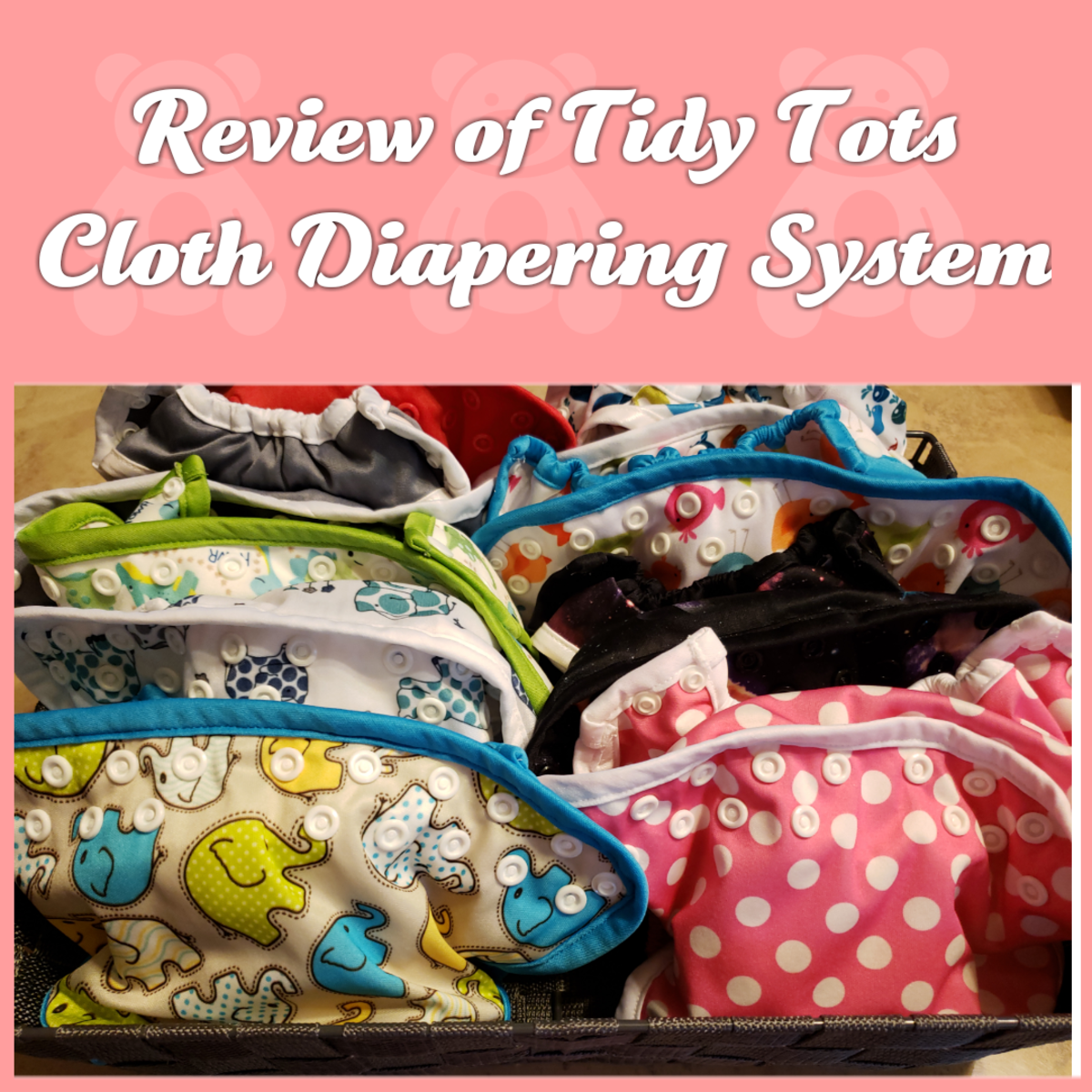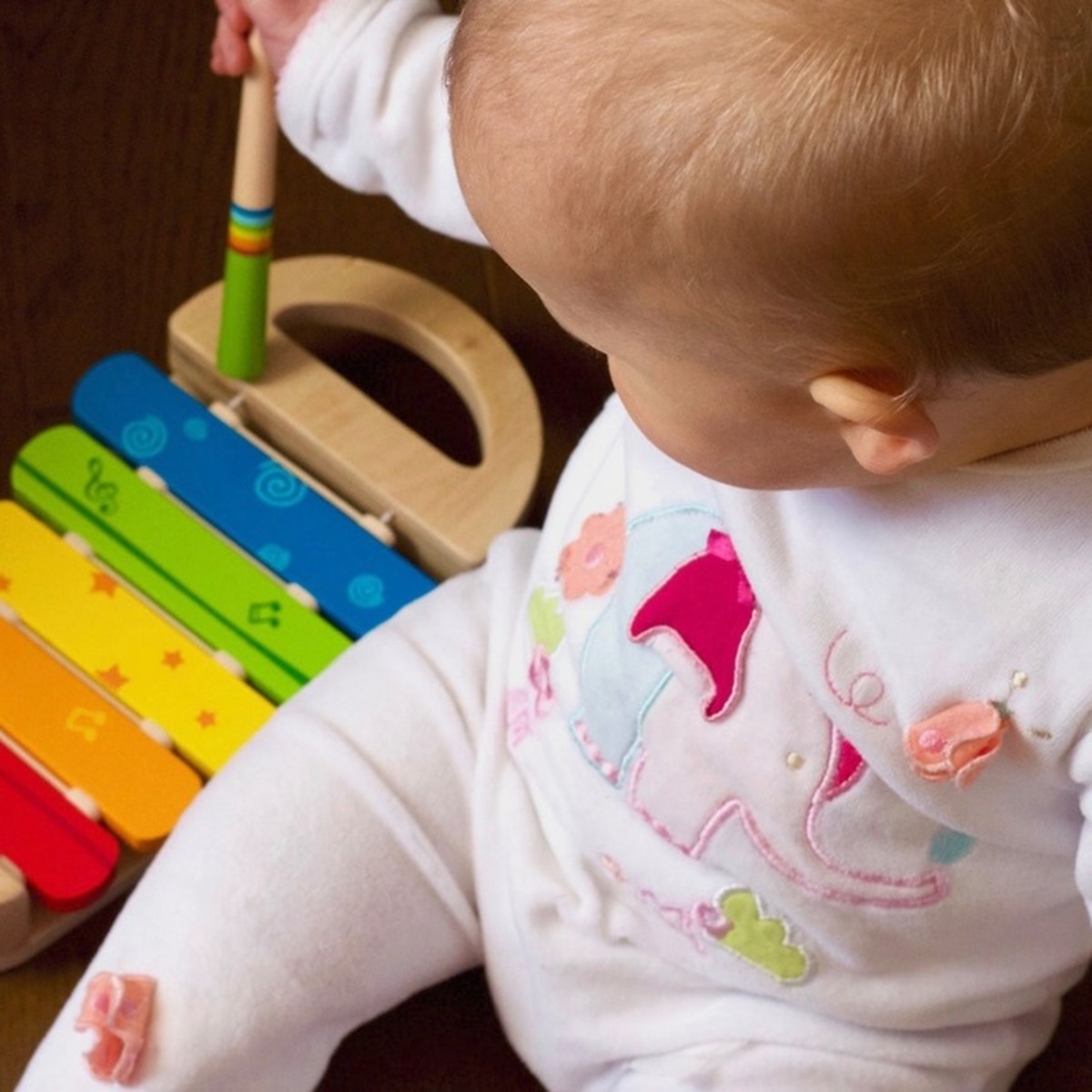Choosing Baby Diapers - Disposable or Reusable?
The Case for Disposables
Before my son was born, I had always planned to use disposable diapers. The reasons I had for this choice were because I felt:
- They are more hygienic. Each time they are soiled, they get thrown out.
- They are less proned to leakage and spills, which also serve to contaminate other objects baby comes in contact with.
- They keep baby drier because the diapers nowadays are super-absorbent. Cloth nappies, on the other hand, need to be changed immediately upon soiling, therefore require more frequent changes for the baby.
Disposable or Reusable?
After a brief argument with the hubby about whether to use disposable or reusable diapers, I decided to do a little research on the topic and this is what I learned:
1. Environmental Issues
A quick search on google revealed a number of "green" articles advocating the use of cloth nappies over disposable diapers because they are much more environmentally friendly. In the article: "Time for a change? Cloth diapers vs. disposal nappies", it is stated that a disposable diaper can remain in landfill sites up to 100 years, whereas cloth nappies only take 6 months to degrade!
According to Wikipedia, life cycle analyses that take into consideration all environmental factors, including raw material and energy usage, air and water pollution emissions, and waste management issues, have shown that both types of diapers have roughly the same environmental effect. However, there are also articles that conclude differently, depending on investigator bias and assumptions made.
2. Diaper Rash
"The Royal Women's Hospital" (RWH) provided an excellent analysis comparing disposable diapers versus cloth nappies, comparing not only the environmental effects, but also taking into consideration financial considerations and health issues. What I found interesting on this site was that they debunked the theory that disposable diapers had a higher incidence of nappy rash. The most important factor to consider when preventing nappy rash is to ensure the diaper is changed promptly when soiled.
This information is also supported by an article from CNN, sourced from Mayo Clinic, which states: "when it comes to preventing diaper rash, there's no compelling evidence that cloth diapers are better than disposable diapers or vice versa". Diaper rash is common among babies, especially in the first 15 months. Some of the causes are:
- skin irritation from stools or urine (the combination of urine and faeces creates ammonia)
- the introduction of new foods into the baby's diet, especially solids which tend to alter the content of the stools
- the introduction of a new product, e.g. a new brand of baby wipes, a new brand of disposable diapers, different brand of washing detergent, fabric softener for washing reusable diapers
- bacterial or yeast infection
- chaffing or rubbing from tight fitting diapers
- use of antibiotics
Tips for preventing and treating diaper rash from familydoctor.org:
- check your baby's diaper often and change it as soon as it's wet or soiled
- carefully clean your baby's bottom between diaper changes. Use plain warm water with or without a very mild soap
- allow your baby's skin to dry completely before putting on another diaper
- use products that contain zinc oxide ointment or petroleum jelly to protect your baby's skin from moisture
- avoid using plastic pants
- if diaper rash persists, change the type of wipes, diapers or soap you're using
Some additional tips:
- pat baby's bottom dry with a clean towel (don't scrub as scrubbing can irritate the skin)
- don't over tighten the diapers
- whenever possible, allow baby some "diaper free" time so baby's bottom is exposed to air and sunshine
- use diaper liners and breathable diaper covers
3. Cost Factor
RWH compared the total cost for full-time disposables versus full-time cloth nappies as at June 2003 and found the following (you can look up the site to check their calculations):
Full-time disposable diapers with 1 year of toddler night nappies with biodegradable nappy liners costs AUD $3894.
Whereas full-time square cloth nappies for 3 years with some fitted nappies for outings using earth-friendly detergents and quality fitted nappy covers costs only AUD $820. If you add in some optional extras, such as fitted-cloth nappies and liners for outings and biodegradable nappy liners, it brings up the cost to only AUD $1472.
4. Other Health Issues
The most important consideration on the debate between the use of disposable versus reusable was the section related to health issues. Even though there is no evidence to the incidence of diaper rash between disposable versus reusable, there are some other concerns to take into consideration, such as:
- the ease of disease transmission via faeces left on the nappy which is then disposed of in regular household waste
- the lack of research on the effect of absorbent gels in disposables (although it has been approved by the FDA to be non-toxic) leading to extreme dryness on baby's thin skin and genitals
- the super-absorbent gel used in disposable nappies contains crystals that form a gel when in contact with urine. Tampons containing these crystals have been removed from tampons because they were associated with the development of Toxic Shock Syndrome, however they are still being used in disposal diapers
- current research indicates that disposable diapers keeps babies' testicles at higher than normal temperatures and there are concerns on the effect of the raised temperatures on future fertility
- TBT (a very toxic chemical) can contaminate plastics during manufacture. Recent research have shown significant levels of TBT in many brands of disposable nappies. Babies may be in contact with up to 3.6 times WHO's estimated tolerable daily intake
5. Potty Training
Finally, there is possibly another additional benefit to using reusable nappies. Disposable diapers wick moisture away from the child's body so children tend NOT to realize they are wet. This is believed to be linked to the reason why disposable diaper-wearing children tend to "toilet train" later than children who wear cloth diapers.






